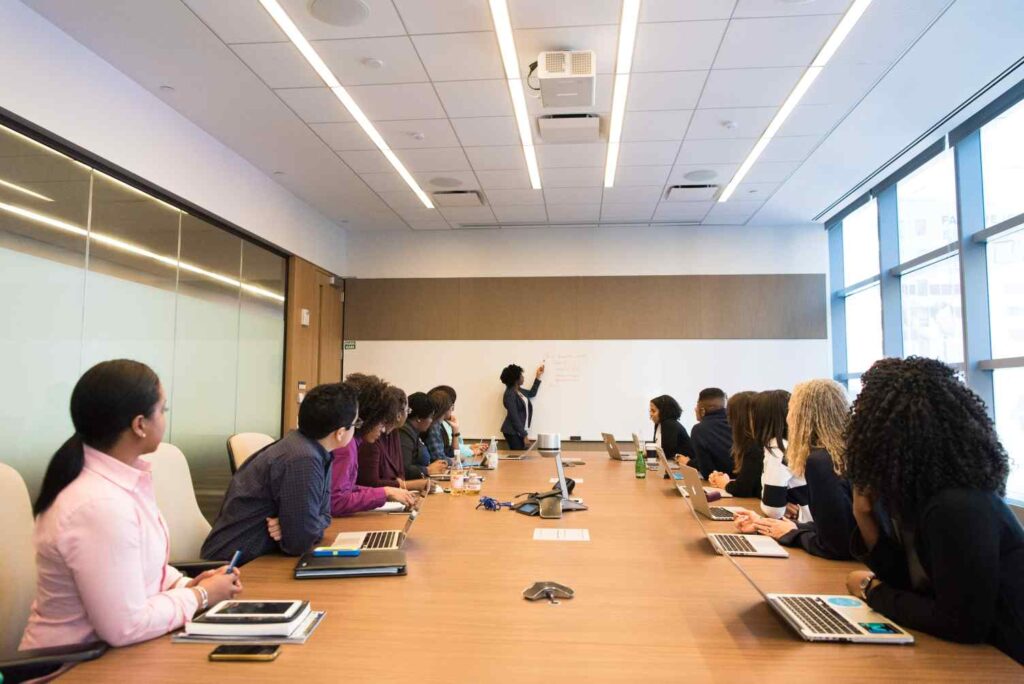I assume you have already gone through lot of information & learning on Adaptability, Lets brainstorm on below scenarios where Adaptability plays major role to find a solution. Please try to establish a step by step action plan to resolve the situation.
Please understand there is no right or wrong answer when it comes to handle real life problems. Adaptability is not just a skill but the mindset with which you an resolve such problems effectively. Let’s go through a preferable step by step action plan to handle above scenarios.
1) Market Disruption in Retail
Problem Statement:
You are a retail manager facing a sudden shift in consumer preferences due to a new trend. How would you adapt your store offerings and strategies to meet the changing demands?
Step by Step solution:
- Step 1: Market Research
Conduct thorough market research to understand the new trend and its impact on consumer preferences.
- Step 2: Inventory Assessment
Evaluate current inventory to identify products aligned with the new trend and those that need adjustments or replacements.
- Step 3: Product Adaptation
Adapt existing products or introduce new offerings that resonate with the changing consumer demands. This may involve altering features, packaging, or marketing strategies.
- Step 4: Staff Training
Provide training to staff members on the new trend, ensuring they can effectively communicate product details and benefits to customers.
- Step 5: Customer Engagement
Engage with customers to gather feedback and understand their preferences regarding the adapted products. This feedback loop helps in refining offerings further.
- Step 6: Marketing and Promotion
Develop marketing campaigns highlighting the adapted products, using various channels to reach target consumers effectively.
- Step 7: Monitor and Adapt
Continuously monitor sales, customer feedback, and market trends. Be ready to adapt further based on evolving preferences to maintain relevance.
This step-by-step plan emphasizes research, adaptation of products and strategies, staff involvement, customer engagement, and continuous monitoring as key elements to address the market disruption in retail due to changing consumer preferences.

2. Tech Upgrade in a Manufacturing Firm:
Problem Statement:
You work in a manufacturing company where the introduction of new technology significantly alters production processes. How would you adapt and ensure a smooth transition while minimizing disruptions?
Step by Step Solution:
- Step 1: Understand the Technology:
Familiarize yourself with the new technology, its benefits, and how it will impact production processes.
- Step 2: Assess Current Processes:
Evaluate existing manufacturing processes to identify areas where the new technology can be integrated for maximum efficiency.
- Step 3: Training and Education:
Provide comprehensive training to employees on using the new technology. Offer workshops, hands-on sessions, and resources to ensure everyone understands its functionalities.
- Step 4: Pilot Testing:
Implement the new technology in a controlled environment or pilot project to assess its effectiveness and identify any challenges.
- Step 5: Gather Employee Feedback:
Encourage employees to share their experiences and feedback about using the new technology. This insight will help address concerns and fine-tune the implementation process.
- Step 6: Adaptation and Optimization:
Adapt manufacturing processes based on the feedback received. Optimize the use of the technology to improve efficiency and productivity.
- Step 7: Continuous Support and Improvement:
Provide ongoing support and resources for employees to ensure they feel comfortable using the technology. Encourage a culture of continuous improvement by incorporating feedback for further enhancements.
By following these steps, the manufacturing firm can navigate the tech upgrade smoothly, ensuring a successful integration of the new technology into their production processes while minimizing disruptions.
3. Remote Work Challenges in an Office Setting
Problem Statement:
As an office manager, you encounter resistance from employees to adapt to remote work policies. How would you foster adaptability to ensure a seamless transition to remote work environments?
Step by Step Solution:
- Step 1: Understanding Concerns
Start by listening to employees’ concerns about remote work. Conduct surveys or one-on-one discussions to understand their challenges and reservations.
- Step 2: Communication & Transparency
Communicate openly about the reasons for implementing remote work policies. Highlight the benefits and address misconceptions or fears regarding productivity and connectivity.
- Step 3: Training & Support
Offer training sessions on remote work tools and technologies. Provide resources and support for setting up home workspaces, ensuring employees feel equipped and supported.
- Step 4: Flexibility
Introduce flexible work hours or schedules to accommodate individual needs. Empower employees to manage their time effectively while maintaining productivity.
- Step 5: Encourage Collaboration
Foster a culture of collaboration through virtual meetings, team-building activities, and regular check-ins. Emphasize the importance of staying connected despite physical distance.
- Step 6: Recognition & Appreciation
Acknowledge and appreciate employees’ efforts in adapting to remote work. Recognize achievements and milestones to boost morale and motivation.
- Step 7: Feedback Loop
Create a feedback mechanism for employees to share their experiences, suggestions, and challenges faced during remote work. Use this feedback to continually improve the remote work setup.
- Step 8: Adaptability Advocacy
Lead by example and demonstrate adaptability in your work style. Show openness to feedback and be willing to make adjustments based on employee needs and evolving situations.
By following these steps, you can help ease the transition to remote work, address concerns, and foster an environment where employees feel supported, connected, and motivated while working remotely.
4. Customer Service Amidst a Crisis
Problem Statement:
You are in charge of customer service in a company facing a PR crisis. How would you adapt your communication strategies to address customer concerns effectively during this sensitive time?
Step by Step Solution:
- Step 1: Assess the Situation
Understand the nature and impact of the PR crisis on customer sentiment and concerns. Analyze customer feedback, social media responses, and direct inquiries to identify key issues.
- Step 2: Communication Strategy Adaptation
Tailor communication channels (emails, social media, helplines) to address specific customer concerns promptly. Train customer service teams on empathetic and informative responses to reassure customers.
- Step 3: Transparent Updates and Apologies
Provide clear, timely updates on the situation, acknowledging any errors or shortcomings. Offer genuine apologies, showing accountability, and commitment to resolution.
- Step 4: Offer Solutions and Support
Provide viable solutions or compensations to affected customers, ensuring fair and prompt resolution. Offer additional support channels or resources for customers seeking further assistance.
- Step 5: Monitor and Adapt
Continuously monitor customer sentiments and feedback post-implementation of solutions. Adapt responses and strategies based on evolving customer needs, ensuring ongoing support and resolution.
- Step 6: Learning and Improvement
Conduct a post-crisis review to analyze the effectiveness of the adopted strategies.
Document lessons learned and use insights to improve crisis management and customer service protocols for future occurrences.
This action plan emphasizes adaptability by focusing on flexible communication, swift adaptation to changing customer needs, and a continuous learning cycle to enhance crisis management capabilities in customer service.
5. Education Sector Innovation
Problem Statement:
You are an educator dealing with changes in the educational landscape, such as hybrid learning or new teaching methods. How would you adapt your teaching techniques to engage students effectively in this evolving environment?
Step by Step Solution:
- Step 1: Assessment of Needs
Evaluate the current teaching methods and identify areas needing adaptation, considering student engagement, technology integration, and learning outcomes.
- Step 2: Research and Training
Explore modern teaching methodologies and attend workshops or online courses focusing on hybrid learning, interactive tools, and student-centered approaches.
- Step 3: Resource Development
Create or gather educational resources tailored for hybrid learning, such as online modules, interactive activities, and multimedia content to support diverse learning styles.
- Step 4: Technology Integration
Familiarize yourself with educational technology tools suitable for hybrid classrooms, like video conferencing platforms, interactive whiteboards, and learning management systems.
- Step 5: Lesson Plan Revision
Modify lesson plans to incorporate interactive elements, group activities, and online components, ensuring a balanced approach between in-person and virtual learning.
- Step 6: Engagement Strategies
Implement engagement strategies that encourage active participation, such as gamification, peer collaboration, and real-life applications of lessons.
- Step 7: Assessment and Feedback
Develop assessment methods that suit hybrid learning, including online quizzes, projects, and peer evaluations. Encourage feedback from students to refine teaching approaches.
- Step 8: Flexibility and Adaptation
Remain flexible to adapt strategies based on student feedback and evolving needs, continuously refining teaching techniques to enhance student learning experiences.
- Step 9: Collaboration and Sharing
Collaborate with fellow educators, sharing insights and best practices in adapting teaching methods for hybrid learning, fostering a supportive learning community.
- Step 10: Continuous Improvement
Commit to ongoing self-reflection and professional development, staying updated with educational trends and adapting teaching strategies accordingly. By following these steps and maintaining a proactive and adaptive approach, educators can effectively navigate the challenges of hybrid learning, ensuring engaging and effective teaching in evolving educational landscapes.
